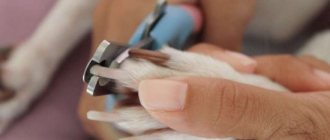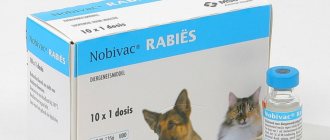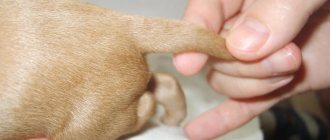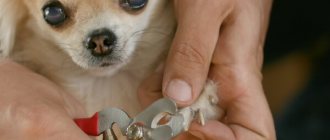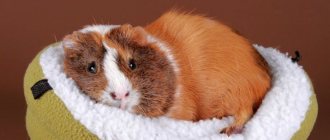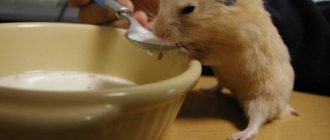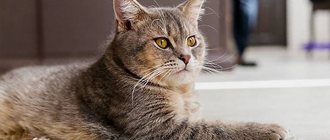Hygienic, high-quality care for pets is called grooming.
The complex of care measures includes combing out excess undercoat, haircut (sometimes shaving), bathing, cleaning the ears and plaque from the teeth, trimming and sealing the tips of the claws. Compared to dogs, cats require less maintenance to keep them hygienically clean. Many veterinarians believe that cats do not need partial or complete hair trimming, since such a procedure can cause more harm than good. And they recommend cutting your pet’s hair only when necessary.
Why shouldn't you cut cats?
Cats do not need a haircut: their fur creates a protective function, regulating body temperature and saving the paw pads from various injuries. These animals “wash themselves” by licking themselves and their relatives; combing itself with claws, thereby preventing the formation of tangles.
If the owner believes that his pet is suffering from the summer heat, then there is no need to rush into cutting it. It is enough to provide the cat with a cool place, for example in the bathroom, under an air conditioner, and you should also make sure that there are several bowls of water in the house.
Features of caring for different breeds
Any cat needs coat care, which includes regular brushing to remove tangles, cleansing with dry shampoo or bathing the pet in water. Carefully remove dirt from eyes, ears, and trim claws. Short-haired breeds are the easiest to care for - you only need to brush them once a week with a massage brush, and bathe them only when necessary.
Long-haired cats require more careful grooming. It is recommended to wash them at least once every 2 months, and it is best to comb them daily. Then the wool does not roll into tangles, and dead hairs are easily removed with a brush.
The coat also determines which cats can be cut and which cannot. Professionals believe that this procedure will not harm all cats whose fur length is more than 3–4 cm. Therefore, cutting is possible for breeds such as Persian, Burmese, Siberian, Angora, etc. Is it possible to cut short-haired cats? This issue is resolved individually.
Reasons why it is not advisable to cut your cat's hair
The opinions of veterinarians vary, but on some points they are unanimous:
The process of shearing is a strong shock and stress for the animal. As a result, a decrease in the body's immune defense may occur.- Due to frequent haircuts, the coat becomes thinner, which contributes to the formation of tangles more frequently.
- Constant haircuts can change the color, structure of the coat and undercoat. It becomes dull and brittle.
- The cat's skin becomes drier, often causes itching and leads to scratching, which will then have to be treated for a long time.
Veterinarians strongly do not recommend cutting cats with short-haired breeds or those with medium-length hair:
- Burmese,
- Maine Coon,
- Norwegian forest cats,
- redgolls,
- Siberian cats,
- Turkish Angoras.
Their fur has a special structure and differs significantly from other species: it consists of two layers and has different hair lengths. A hairless cat can easily become overheated or hypothermic.
Necessity
The owner decides whether the pet needs a haircut.
With regular coat care and timely combing of tangles, animals can do without a haircut. Caring for the hair of a long-haired cat takes a lot of time. In the absence of regular combing, tangles form very quickly. Cats of the Persian breed with a soft hair structure and a coat length of up to 10 cm are especially affected. These animals require daily combing. Individuals who have not been accustomed to daily care since childhood often actively resist.
Trying to deal with the tangles on its own, the cat swallows a large number of hairs. The same thing happens during licking during molting. Hair balls in the stomach mix with food, bezoars are formed, which move through the intestines and increase in size. The condition can cause vomiting, constipation, intestinal bleeding and obstruction.
Tangles located next to the skin are especially dangerous. They cause inflammation of the epidermis, and flies can lay eggs under them. Persian cats in neglected condition definitely need a haircut.
Cats of the Maine Coon, Norwegian Forest cat, and Siberian breeds have shorter hair that is not prone to tangles. Their fur has a two-layer structure that creates an air gap between the skin and the environment. In shorn individuals, thermoregulation is disrupted. Veterinarians have different opinions on whether cats of these breeds should be shaved regularly.
Color-point cats (Neva Masquerade) or tipping (British breed) need to be shaved with caution; the color of the fur on the belly may become darker. Cats of short-haired breeds are cut in exceptional cases: for medical reasons, in case of indelible dirt
Cats of short-haired breeds are cut in exceptional cases: for medical reasons, in case of indelible dirt.
When is a cat's haircut necessary?
There are situations when a four-legged friend really needs to cut his fur coat. Let's look at the main ones:
When a cat has a large number of mats of different sizes. Combing the animal in such cases may not always give results, since the tangles very quickly form dense wool balls, which are easier to cut out. In addition to being unsightly, tangles cause discomfort and health problems for your pet. By tightening the skin, they interfere with blood flow and cause itching. After all, by their nature, cats are very clean; they will try to get rid of the formed tangles on their own, scratching and gnawing out the lumps. But this is dangerous for the pet - he may accidentally swallow a hairball, which can block the passage in the digestive tract or cause severe vomiting.- Skin disease. It can be recognized by the appearance of weeping ulcers on the skin. The thick coat will make it difficult to treat with medications and will not provide adequate ventilation.
- Long molting. It can be caused by various reasons from skin problems to metabolic disorders. It is worth consulting a doctor in a timely manner.
- One of the family members has a wool allergy. But this method of getting rid of wool in the house is ineffective. After cutting, the amount of hair will decrease in volume, but if a person has an acute allergic reaction to wool, then the number of hairs on the pet’s body does not matter. We will have to look for other ways to combat allergies.
There are some cats that physically cannot take care of themselves. This is mainly due to age. Their fur will look dirty and unkempt, so it's best to keep it trimmed.
Types of haircuts for cats
A special hygienic haircut is carried out no more than twice a year, so as not to damage the structure of the coat and skin. If the cat must participate in an exhibition, the last haircut is done no later than six months before the event.
Trimming is usually done with a special clipper, leaving a hair length of approximately 3-3.5 millimeters. After this procedure, the animal’s skin becomes soft and velvety to the touch.
It is not advisable to cut your cat’s hair on your own, since a high-quality result will require many special tools:
- different types of hairdressing scissors,
- hair clipper,
- set of combs
It is forbidden to cut cats completely, that is, bald. This will disrupt the heat exchange process and can soon cause serious skin irritation.
Therefore, when grooming an animal, it is necessary to leave at least a minimum length of hair to protect it from sunburn or hypothermia.
Description and photo
Sometimes, for stylish reasons, show cats are given a model look by experimenting with types of trimming. There are many options for such haircuts now, but let’s look at the most popular ones:
- "Puma" - short hair on the body, and the head looks like a lion's mane;
- “Dragon” is a curly haircut in which hairs are left along the line of the spine, and various figures or symbols are cut from them;
- “Golfies” - hair is removed only on the upper part of the paws.
Varieties
Cat haircuts are divided into two groups: model and hygienic. The latter pursue very specific goals and are carried out in order to protect the animal from overheating and tangles, as well as for veterinary indications. These include diseases of the skin and gastrointestinal tract, increased secretory activity of the sebaceous and para-anal glands, as well as the senility of the pet, when it is no longer able to cope with its fur on its own.
Model haircuts are performed exclusively for decorative purposes to make the animal more attractive, as well as before cat shows. The most common of them are haircuts like a lion, like a dragon, and like a dinosaur. The puma hairstyle is also very popular and is a simplified version of the lion haircut. The only difference is the design of the tail: for example, if in a “puma” it is cut almost bald, then in a “lion” it repeats the shape of a real lion’s tail with a fluffy tassel.
However, the most creative can be called the “dragon” haircut, which includes various variations of cutting symbols, letters, ornaments and figures on the back of the animal. Despite the rather exotic appearance of the pet, most veterinarians warn owners against performing this haircut. This is due to the fact that after cutting the patterns, the fur on the pet’s skin becomes uneven, which greatly disrupts thermoregulation and does not allow the body to adapt to this type of heat transfer.
A graduated hairstyle has a much stronger negative impact on the cat’s condition than uniform haircuts, to which the body adapts over time. The same, but to a slightly lesser extent, applies to the “socks”, “sock socks” and “puss in boots” haircuts, which are also very popular among cat owners. Among exhibition haircuts, “harlequin”, “modern” and “continental chic” are very popular.
How to trim or shave a pet?
There is nothing complicated in grooming a cat if you follow the rules and sequence of actions:
- Nail trimming. The claws are trimmed with special tweezers, having been disinfected in advance. When you lightly press the paw pads, the hidden claws will extend. The owner will need to trim only the very ends.
- To begin with, you may need an assistant - he will hold the animal, preventing it from running away. Some cats react aggressively to the appearance of grooming tools. For the safety of the owner and the pet itself, it is worth putting a special plastic collar on the animal that does not allow it to bite.
The cat is laid on its side, its paws are fixed. To cut, you need a machine or scissors. The machine will help avoid damage to the skin, but can be frightening with its buzzing.- First, the hair is removed from the sides, and then moved to the back and belly. You need to remove hair as it grows, and in the opposite direction. Hair that remains long after cutting with a clipper can be trimmed with nail scissors. There must be a tassel on the tail.
- At the end of the procedure, the pet must be bathed with a special shampoo for cats, and then dried with a towel. If your pet is not afraid of a hair dryer, it can also be used for drying. But veterinarians still recommend going to a professional groomer. Because he is a competent and qualified specialist. He will do the haircut quickly and without any damage.
When performing a haircut of any shape, there are certain rules:
- in order not to damage the mustache and hair in the ears, the hair on the head, muzzle and in the auricle is not cut;
- “socks” are left on the lower part of the legs;
- the hairs of the front legs under the elbow and from the hind legs under the jumping joint are not removed;
- the hair is left at the end of the tail (a section at least 3 cm long must be left uncut).
Adviсe
Before deciding to groom your cat, you need to take into account the recommendations of experienced professionals. Thus, professional groomers advise, if possible, not to touch the tail, which is the most vulnerable part of the animal’s body.
Even minor damage to it causes enormous suffering to the pet and can negatively affect the cat’s overall well-being. You should also pay attention to the stomach, especially the lower, most tender part.
The next point that experts advise you to pay attention to is the psychological preparation of your pet. This procedure may require some time and patience from the cat owner.
So, long before the planned haircut, you need to start accustoming the animal to the table. This should be done very carefully and consistently.
To begin with, simply place the cat on the work surface, stroke its sides and back and, if possible, try to lay the pet on its side without stopping stroking. After the animal stops behaving warily on the table and responds happily to caresses, they carefully begin combing, each time increasing the time of the procedure.
If you are consistent and do not forget to regularly brush your cat on the table, then over time she will get used to the procedures and will perceive both the table and the comb quite calmly. The next important step will be to accustom your pet to the sound of a running machine. Ideally, it is better to purchase a silent device, but if this is not possible, then you can try to accustom the cat to the noise of a running electric motor. To do this, a few days before the haircut, you should turn on the clipper for a short time, while holding the pet in your arms and stroking it.
In general, grooming a cat should be perceived as an extremely last resort when the animal’s fur is hopelessly neglected and it is not possible to comb out the tangles. As for haircuts for decorative purposes, in this case it is necessary to be guided by the cat’s reaction to the procedure, while assessing the possible consequences. When performing complex show hairstyles, it is recommended to give the cat a rest and trim it in 2-3 stages.
It should also be remembered that a trimmed mustache, as well as hair inside the ears and on the head, significantly reduces the sensitivity of the smell receptors. There is no need to groom overly aggressive or overly active pets yourself. It is better to take such animals to an experienced groomer, where sedatives may be required. Thus, each owner must decide for himself whether to cut his pet’s hair or not. To do this, you need to soberly assess the benefit/harm ratio and focus primarily on the well-being and mental balance of your pet.
To learn why cats need to be groomed, watch the following video.
Benefits and harms
Like any grooming procedure, cat trimming has its positive and negative properties. Let's look at them in detail.
Pros:
Relief from heat and health problems. There is a very common stereotype that representatives of long-haired breeds suffer from heat, especially during the hot season.- It is necessary to cut a cat if for some reason (for example, due to age) it cannot care for its fur, and you do not have the opportunity to constantly care for it. All this can soon lead to a visit to the veterinarian, and in worst cases, to surgery.
- Caring for a cat can also save the lives of owners who suffer from allergies or asthma. It will help eliminate the factor leading to suffocation and exacerbation of the disease.
Minuses:
- Many cats have a negative attitude towards haircuts. It, like bathing, causes discomfort and stress for the cat. After this, the pet may be depressed, and due to resentment, it may even become offended and ignore the owner. Particularly proud pets can leave a “surprise” in their owner’s slippers in retaliation for an attack on their fur coat.
- After cutting, the cats' hairs become a little smaller. Even the color of the animal may become lighter. If the coat is shortened too much, the animal will feel unwell and may experience dryness and loss of elasticity.
- There are cases when in some areas of the skin the hair does not grow back after cutting. This means that alopecia appears. This is caused by hypothermia and improper hair growth. This condition is mainly characteristic of dogs, but there have been cases when it also occurred in cats. If baldness began to appear even before the cut, do not try to solve the problem: here you need to contact a veterinarian.
How to reduce unpleasant consequences to a minimum?
To alleviate the stressful state, you need to try to gradually reconcile the animal with the procedures performed. The main method is psychological:
rid the cat of contact with unpleasant objects - nail clippers, scissors, hair clippers; distract with treats, new toys, favorite activities; during and after the manipulations, constantly talk and stroke; Do not laugh or focus on the appearance of the trimmed cat.
If there are no results from psychological assistance, you should visit a veterinarian and get the necessary medications. The list of possible medications is presented:
- Pheromones - aerosols of synthetic origin. After spraying the substance, animals experience an emotional uplift and a feeling of security and safety.
- Antidepressants - prescribed by a veterinarian when a pet falls into a state of deep depression. Therapy is carried out with Valium, Diazepam.
In addition to medications, the doctor may recommend wearing a special collar soaked in pheromones and a complex of essential oils. It allows the animal to quickly get out of a stressful state and stop constantly licking itself.
Cats do not always react aggressively to hairdresser's manipulations. Indifference to procedures is observed in sterilized animals. Their psyche is more resistant to external stimuli, their behavior is characterized by calmness and pronounced laziness.
Experts point out that changing the appearance of furry pets cannot occur only at the whim of the owner; the procedure requires good reasons. The desire to create a fashionable “hairstyle” can cause a long-term quarrel between the animal and the owner, cause hidden anger in the pet and provoke a long cold war

